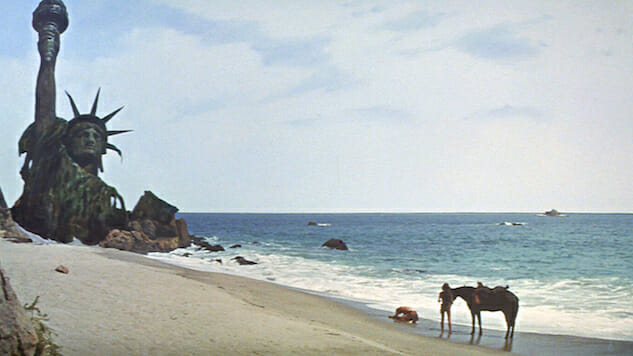It’s official: as of 2026, the FIFA World Cup™ will feature a whopping 48 teams. The Guardian has a neat little explainer here, but the gist is that the tournament will feature 16 three-team groups, followed by a 32 team straight knockout to the final.
Reaction in the hardcore soccersphere has been mixed. Analyst Chris Anderson points out that the growth in the number of teams merely reflects the growth in nations since the tournament began in 1930. Others argue the new format includes more do-or-die games and fewer group stage ‘dead rubbers,’ though this will no doubt be balanced against the propensity for a few teams to park the bus to glory.
None of these aesthetic considerations mean much to FIFA; what matters is the prospect of $1 billion in additional revenue. The format itself was likely a sop to broadcasters. Sepp may be long gone but the global association knows where its bread is buttered.
The standard party line from most reasonable soccer experts is that this isn’t great but football will survive and the World Cup will still be the biggest sporting tournament in the world, forever and forever amen.
However, there is reason for doubt this time around. After all, there is a generation of kids who love playing FIFA and tweeting GIFs and watching illegal feeds while snapchatting on their parents’ couch as more and more economic wealth funnels to the super-rich. They don’t have the same romanticism about a crying Pele or Tardelli’s run, and they may not care to watch five games a day across lord knows how many channels on cable packages that may be dwindling in popularity by 2026. If however FIFA can figure out how to monetize user tweets and FB posts, in addition to highlights, that may not be a problem.
All of these points are up for debate, but the most popular argument for a more inclusive World Cup—that smaller football nations deserve a chance to compete—is also the most wrongheaded, and the most morally dubious.
For one, the idea that smaller, less wealthy nations have been ‘shut out’ of the 32 team tournament is nonsense. Uruguay, a nation of 3.4 million people, has appeared in 12 World Cups since 1930. Honduras, a nation of 8 million people that ranks 167th in per capita GDP (one spot below Syria), has qualified for three tournaments. In 2014, Costa Rica, a nation of under 5 million, managed to make it to the quarterfinals, losing on penalties to the Netherlands. For better or worse, these national associations worked to earn their place in the world’s most sought after competition.
This is not to say that soccer is a global meritocracy; far from it. Many nations are in dire need of improved facilities and better soccer infrastructures. But despite their charitable status, FIFA has not exactly thrown heart and soul in helping smaller nations fight for a chance to make the big show.
While 13% of FIFA’s annual operating expenses (as of 2015) go to development programs including FAP and Goal, 61% go to organizing tournaments including the World Cup. And, as FiveThirtyEight pointed out a couple of years ago, funding from these programs does not appear to be needs based. Much of it has been traditional pork barrel spending with little accountability from the national associations. By expanding the tournament, FIFA is signalling to their member countries that they need not worry about the hard work of establishing thriving soccer programs; they need only wait a few decades until FIFA adds more teams to the finals.
There is no better example of this mentality than my own nation, Canada, which qualified once for the World Cup in 1986, back when it was a paltry 24 teams. Since then, efforts to improve soccer development here have been hampered by infighting between regional and provincial soccer associations and the Canadian Soccer Association, with the former wishing to keep registration revenues to themselves while the latter limps from one failed initiative to the next. It is only recently that the country has put self-interest aside and taken serious steps toward a true development pathway including a stable national league; it only took three decades of missteps, political self-interest and intransigence to get there.
Canada was emphatically not a victim of an unfair qualification system, or a ‘closed’ World Cup. One of the wealthiest nations on earth, in which football is among the most popular participation sport among children, Canadian soccer has only itself to blame for the last three decades of mediocrity.
But all that may not matter; Canada’s chances to qualify for a World Cup are looking significantly better with a 48 team tournament, a development supported by Canadian CONCACAF president Victor Montagliani. Like a middling striker aided by a widened goal mouth, who needs to focus on the boring, difficult, nitty gritty of developing a strong domestic soccer culture when you can simply wait for FIFA to announce the next lucrative tournament expansion?
